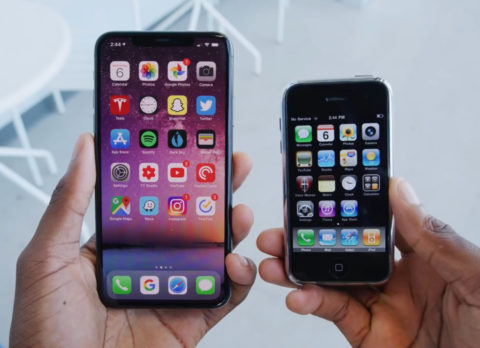Every year when Apple releases a new iPhone, there are inevitably those who complain that not enough has changed from the previous generation. Iterative advances – like the relatively minor changes implemented in this year’s iPhone 11 – can sometimes disappoint those committed to a yearly upgrade cycle, but those who wait a little longer to get a new iPhone will notice these small improvements add up fast.
That’s exactly what YouTuber MKBHD is exploring in his latest video, which compares a brand-new iPhone 11 Pro with an original first-generation iPhone from 2007.
Obviously there’s a huge difference between the two – with the original iPhone’s 3.5-inch display and chunky bezels looking comically tiny beside the iPhone 11’s 5.8-inch screen – but it’s interesting to see just how much Apple had right from day one.
Sure, the screen resolution is so low you can see individual pixels, but at the time a touchscreen display that could register ten fingers at once was revolutionary. The iPhone’s design almost single-handedly changed the world of technology – MKBHD notes that although competing phones had touchscreens at the time, their design and capabilities were so different from the iPhone. Today, nearly all smartphones work in more or less the same way, no matter who makes them.
This original iPhone – running iOS 3.1 – is surprisingly snappy even today. After 12 years, it’s a wonder the thing even turns on, but here it is opening apps without much delay. It’s crazy to see the old camera app with nothing but a single button and no video capabilities. Speaking of which, the camera itself still works perfectly, though it’s pretty rudimentary by today’s standards.
Don’t be put off by the fact this is an amateur YouTube video – it’s beautifully shot and host MKBHD shares some excellent insights. He clearly knows his stuff, so dive in and enjoy the full ten-minute video. It’s a perfect blend of nostalgia and appreciation for how far we’ve come.



